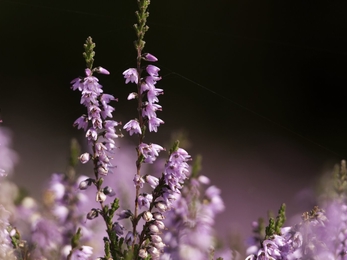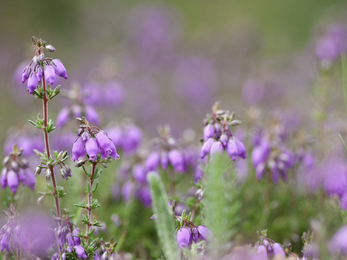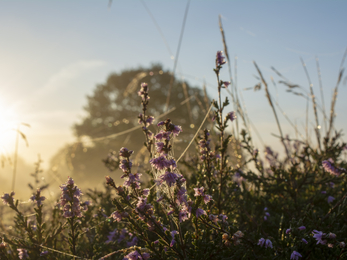In Suffolk, three types of heather can be found growing: bell heather, Erica cinerea, common heather or ling, Callunais, and crossed-leaved heather, Erica tetralix, although the latter is found growing much less abundantly in Suffolk. Bell heather and ling make themselves at home on a variety of different habitat types. Bell heather tends to grow on heathland, open woodland and occasionally can found be on the coast and it thrives in well-drained, dry, acid soils. Ling also grows on heathlands and open woodland but in contrast to bell heather, it grows on moorland and bogs too preferring both acid and peat soils.
The main distinctions between bell and ling are their differences in colour and flower shapes with bell heather displaying beautiful bell-shaped flowers in deep purple hues with ling displaying a more delicate, subtle shade of pink with a more typical cup of small petals. They can be found happily growing side-by-side on most Sandlings heaths, with ling being the only species present on our Breckland sites.






